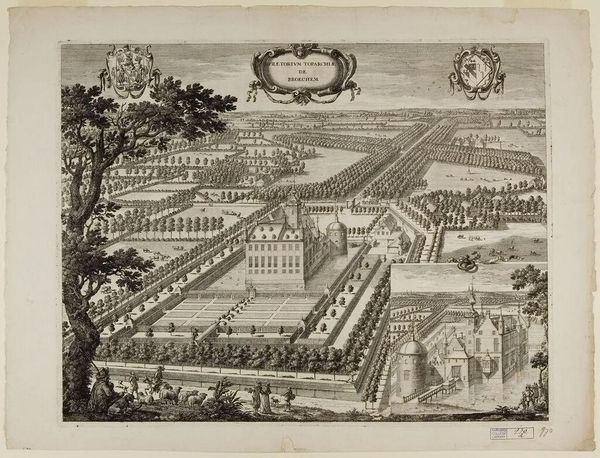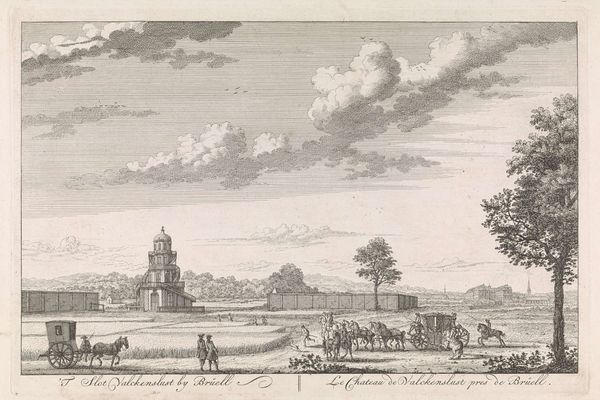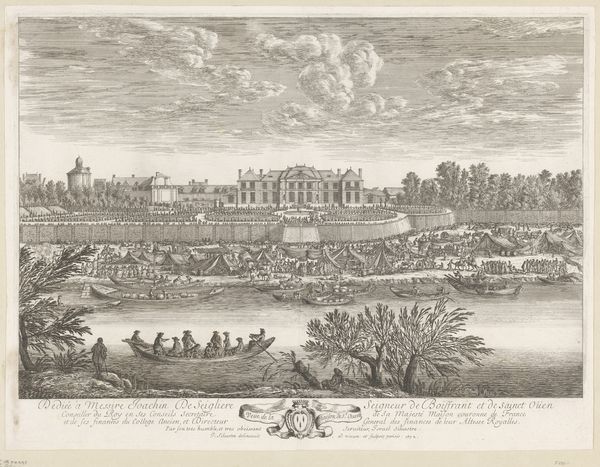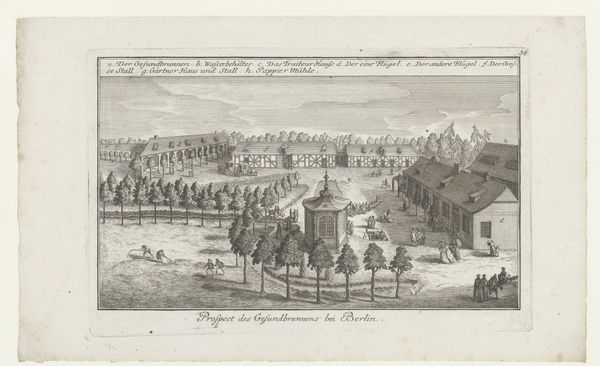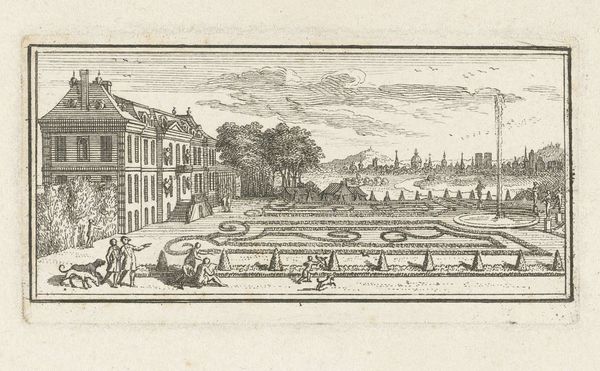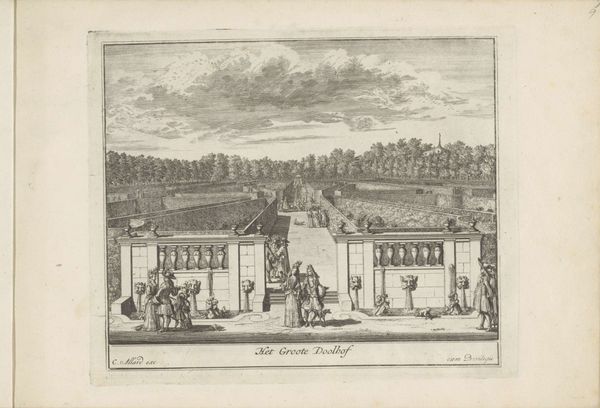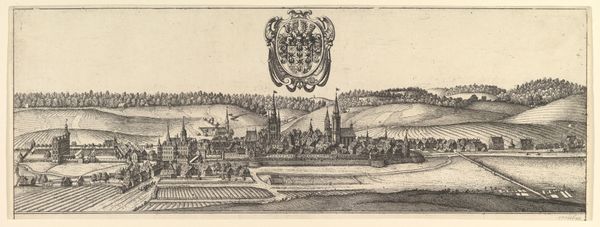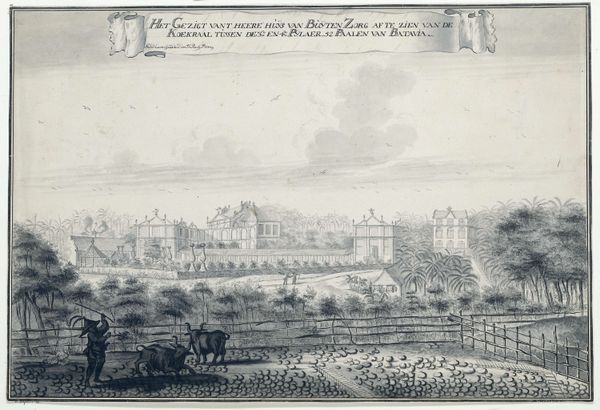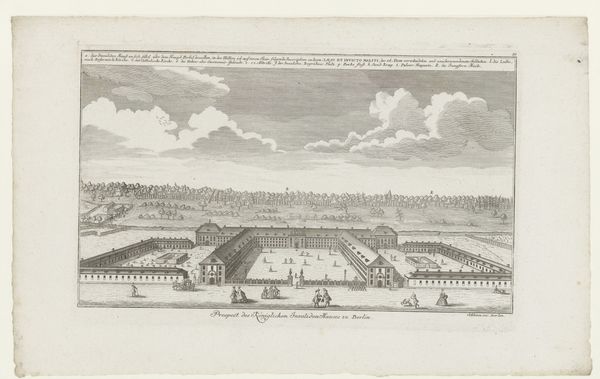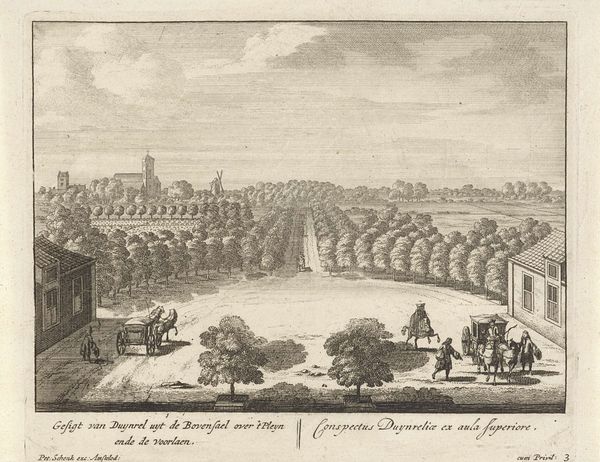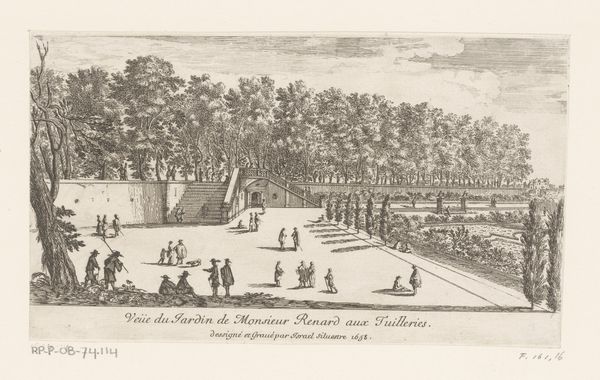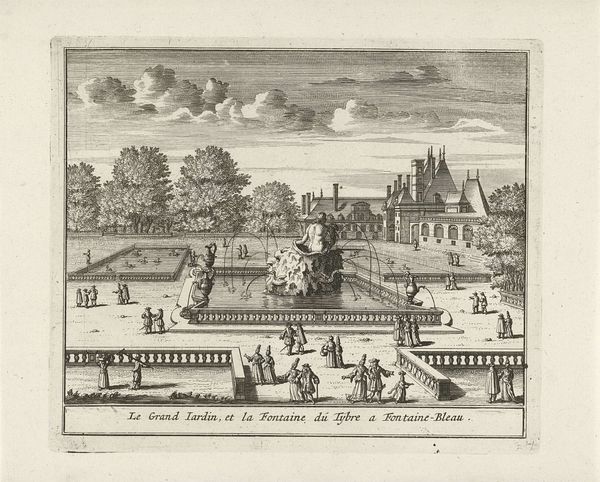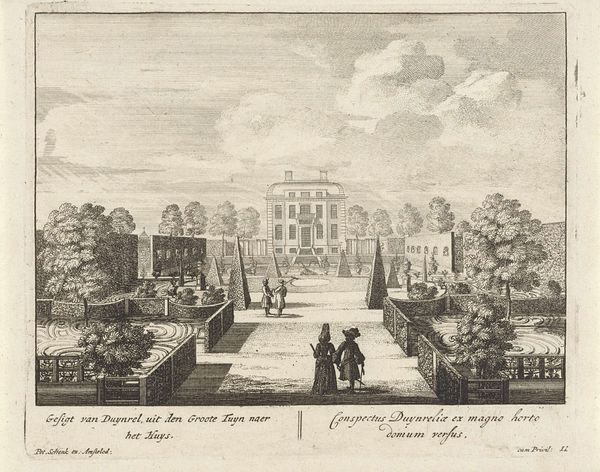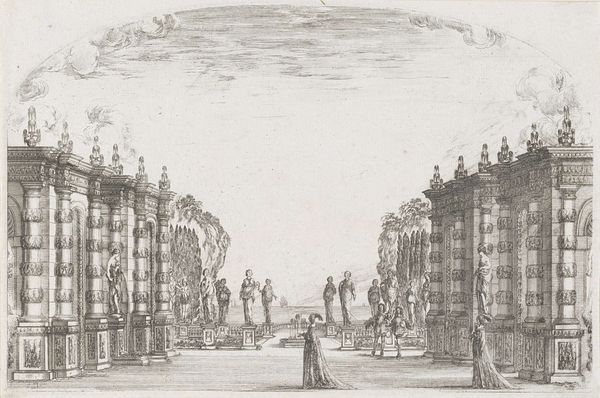
Dimensions: height 360 mm, width 615 mm
Copyright: Rijks Museum: Open Domain
Curator: This is Cristoforo dall' Acqua's "Tuin van Coco Valmarana in Vicenza," an engraving executed sometime between 1744 and 1787. The crispness of the lines creates such detail. What is your immediate impression? Editor: Immediately, I see a structured yet somewhat melancholic landscape. The composition is rigorously linear, almost oppressively so, but the subtle gradations in the shading provide a textural depth that intrigues me. Curator: The drawing presents the Valmarana Garden as a site of ordered leisure, a concept reflecting the social and cultural ideals of the Italian aristocracy during the late Baroque and early Renaissance. Notice the figures strolling; they are deliberately framed by architectural elements. Editor: Indeed, these figures seem strategically placed to emphasize scale and reinforce perspective. Observe the architectural framework. Dall’Acqua uses precise strokes to articulate the interplay between constructed forms and nature. What kind of philosophical intentions could this kind of structure evoke, or communicate? Curator: Precisely! By representing nature through design, artists echoed aristocratic ideals of mastering their environment and therefore legitimizing their position within the social and political structures. Consider also, however, that the formal garden itself was becoming accessible to the emerging bourgeois class. Editor: Ah, so this manicured perspective could symbolize an attempt by the aristocracy to maintain distinction and power amid social change, even in their garden aesthetics! The rigid order mirroring, perhaps, their attempts at maintaining their societal order. It feels… like an engraving, right down to the core! Curator: Absolutely. Art served as a mechanism to justify power relations, yet it's fascinating to consider how these carefully crafted images played a role in a dialogue about cultural transition. What is most fascinating for me is this piece’s capacity to encapsulate a transformative period in how social position was defined. Editor: Well, my initial impression, while purely formal, led to unexpected historical contexts. It seems that form truly does reflect history and ideology.
Comments
No comments
Be the first to comment and join the conversation on the ultimate creative platform.
